Is Mercedes’ improved straight-line speed down to some clever ride-height engineering?

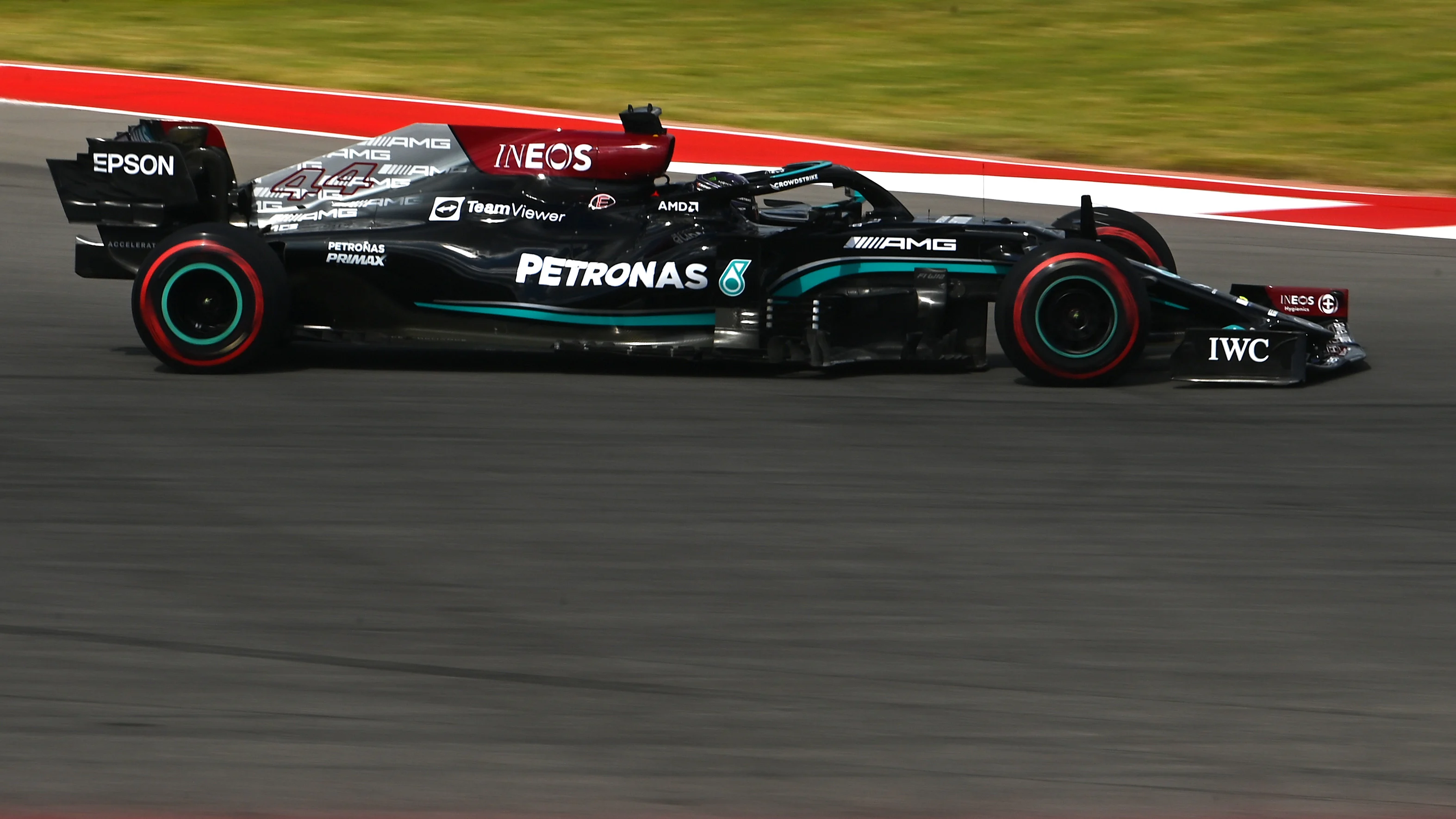
Mercedes have managed to make up ground on the straights compared to Red Bull in recent races – and this was the subject of much discussion on Friday at the United States Grand Prix – but is it down to increased power or an elaborate piece of engineering? Mark Hughes delves into the topic, with technical illustration from Giorgio Piola.
Back in June at the French Grand Prix Red Bull were able to run a lower wing than Mercedes to be faster on the straights and still be faster over the lap. “If we ran such a low wing as that,” observed Toto Wolff at the time, “we’d have lost more lap time through the corners than we’d have gained on the straights.” The RB16B was looking like just a better all-round aerodynamic package.
WATCH: Hamilton and Mercedes' pit stop dilemma at the 2021 Turkish Grand Prix dissected
In Istanbul two weekends ago, the Mercs were vastly faster on the straights than the Red Bull – and a vital couple of tenths faster over the lap. It’s been that way several times since the Mercedes took a performance step in July at the British Grand Prix.
This would most obviously be explainable by a power increase – which is indeed what Christian Horner and Dr Helmut Marko believe is what has happened. “Mercedes are extremely fast on the straights for the downforce they’re using,” said Horner in Turkey. “We’ve been observing that since Silverstone. Something is strange there.”
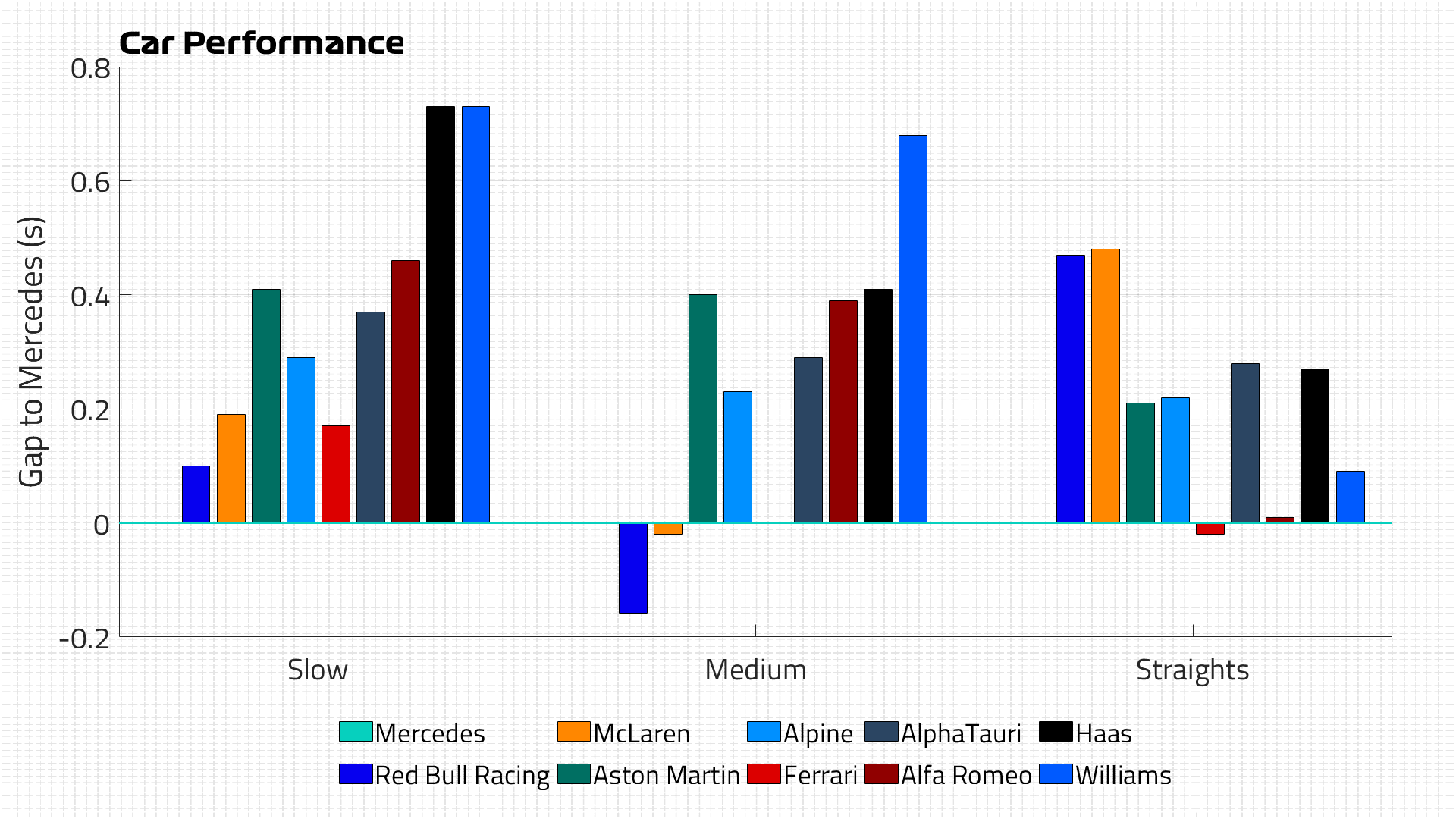
Mercedes insist there has been no power hike. The inference is that the difference is the big aerodynamic upgrade Mercedes made for Silverstone, the last major development that went onto the W12. But is it possible that an aero upgrade could account for such a dramatic boost in straight-line performance?
Possibly, yes. If Mercedes have managed to take full advantage of their lower rake concept by getting a more dramatic diffuser stall.
TECH TUESDAY: Mercedes' last big 2021 upgrade that helped Hamilton to Silverstone victory
Teams have been deliberately initiating diffuser stall to boost straight-line speeds for 15 years or more. The underfloor with the diffuser at the back of it creates a lower pressure beneath the car than the ambient air on top, thereby exerting downforce on the body. More so with a high-rake car than a low-rake one.
But as the speed of the car increases and the downforce from the underfloor and rear wing increases at the square of the speed, so the rear of the car is pressed down on its suspension and the rake angle of the floor reduces. It’s still building downforce because the speed is increasing, but the lower floor angle means it’s not as dramatic an increase as it would be if the floor was still at its maximum rake angle.
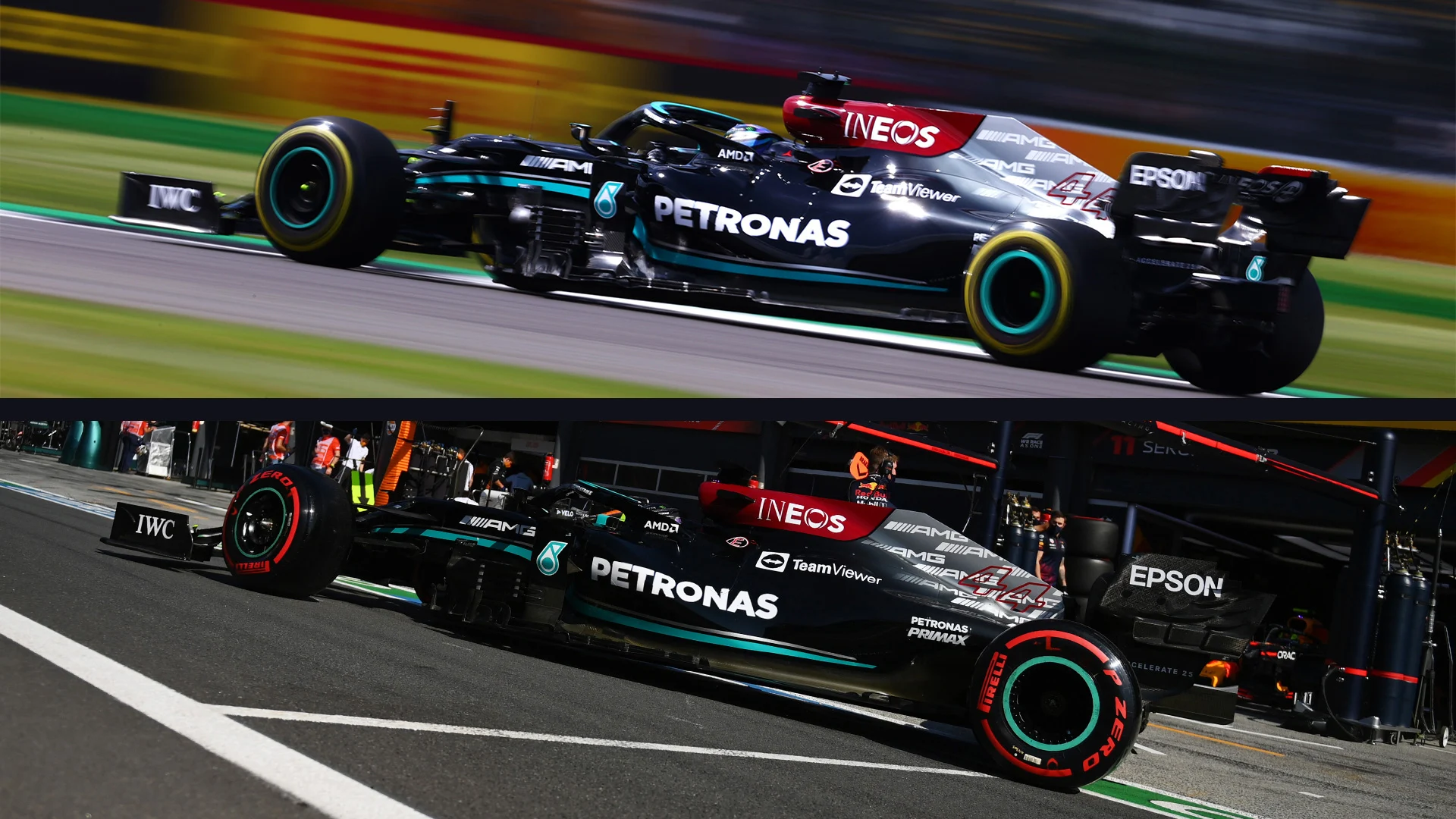
If the rear of the car can be induced to sit low enough, eventually the diffuser will stall and will no longer be inducing that low pressure area from the floor. That means a vast reduction in the car’s downforce but with it comes a corresponding decrease in drag. This will boost the speed of the car on the straights, where downforce isn’t needed.
It’s an extremely intricate thing to engineer and requires a lot of very powerful simulation tools. The stall point has to be tuneable from track to track to ensure it isn’t close to the stall position through the fastest corners. The downforce is not needed on the straights, but it most certainly is in the corners.
Although the static ramp angle of the diffuser – and therefore its power – is limited by regulation, the higher rake car effectively increases that angle by running the whole floor at a bigger angle. A high angle diffuser will tend to work best at relatively big rear ride heights.
The lower angle the diffuser runs at on the low-rake Mercedes will tend to see it performing better at lower ride heights. But it will also be easier to stall at those low ride heights.
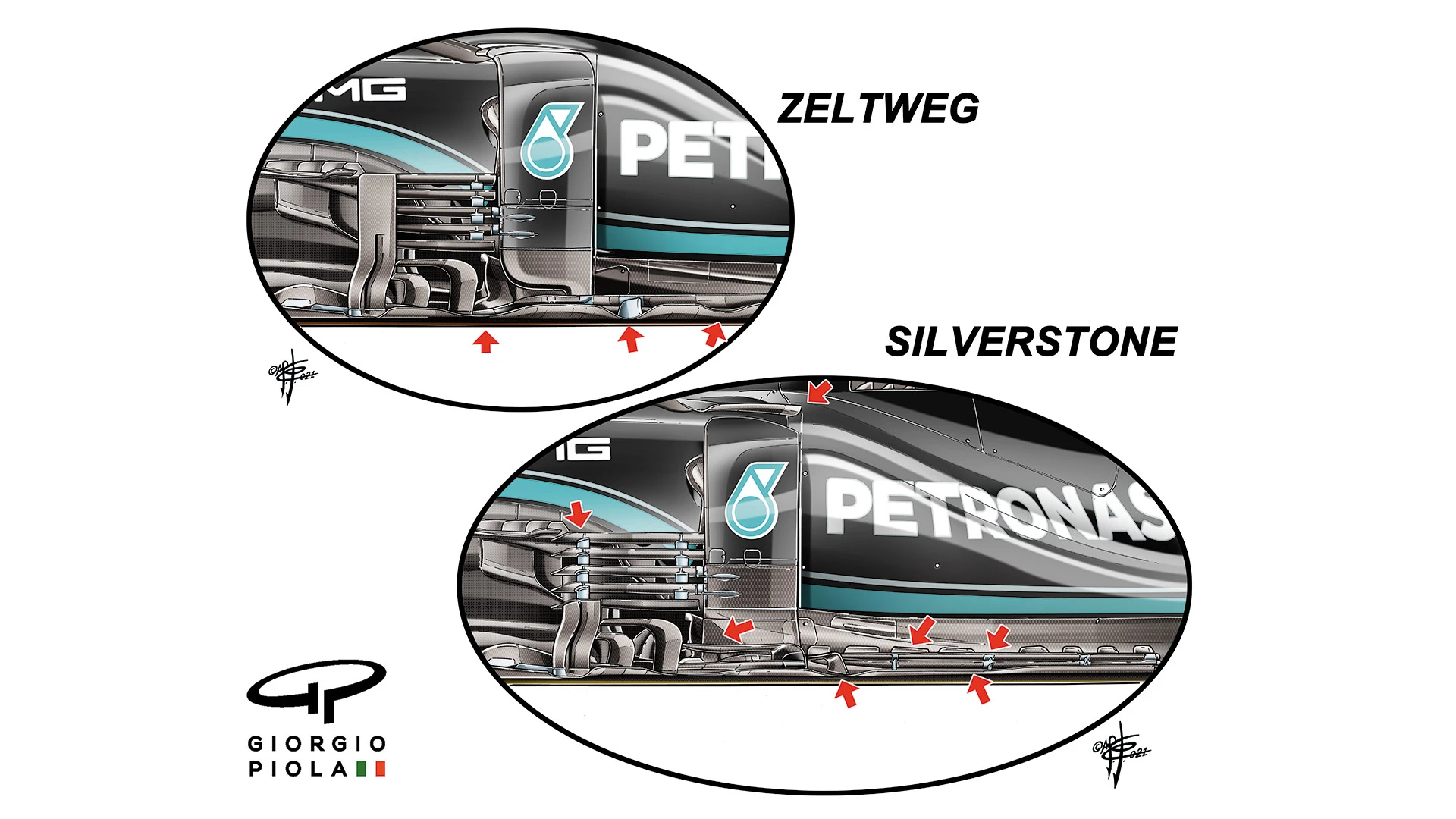
Mercedes’ Silverstone upgrade comprised big changes around the front corner of the floor. The bargeboards were re-designed to match a reprofiled floor edge and re-angled deflectors in a way suggesting it was trying to extract air from that front floor corner.
There is only a finite volume of air hitting the car and some will go around the car and some under it. These changes would potentially change the proportion of that split.
READ MORE: Binotto reveals new-spec hybrid system was key to strong Ferrari performance in Istanbul
Could these changes induce diffuser stall at a lower speed? If they can get the same stall point at a lower speed it will decrease drag. In which case it could either run a bigger wing to get the same straight-line or the same size wing for increased straight-line.
This would potentially give the diffuser stall far more tuneability from track to track, which may manifest itself as spectacular straight-line speed gains on tracks most sensitive to it.
But it’s only a theory – it may just be more power…
This article was first published on October 19th, 2021.
Next Up
Related Articles
 Verstappen on what he would never do as an F1 team boss
Verstappen on what he would never do as an F1 team boss Who are the 2026 F1 teams?
Who are the 2026 F1 teams?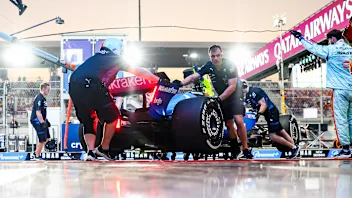 Williams become latest team to announce 2026 livery reveal date
Williams become latest team to announce 2026 livery reveal date BarrettoLawrence Barretto’s 5 bold predictions for 2026
BarrettoLawrence Barretto’s 5 bold predictions for 2026 Hadjar details what excites him most about racing for Red Bull
Hadjar details what excites him most about racing for Red Bull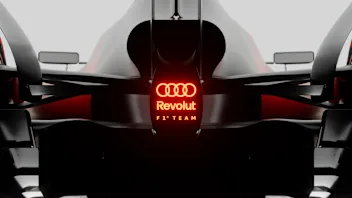 Audi complete first fire-up of 2026 F1 car
Audi complete first fire-up of 2026 F1 car